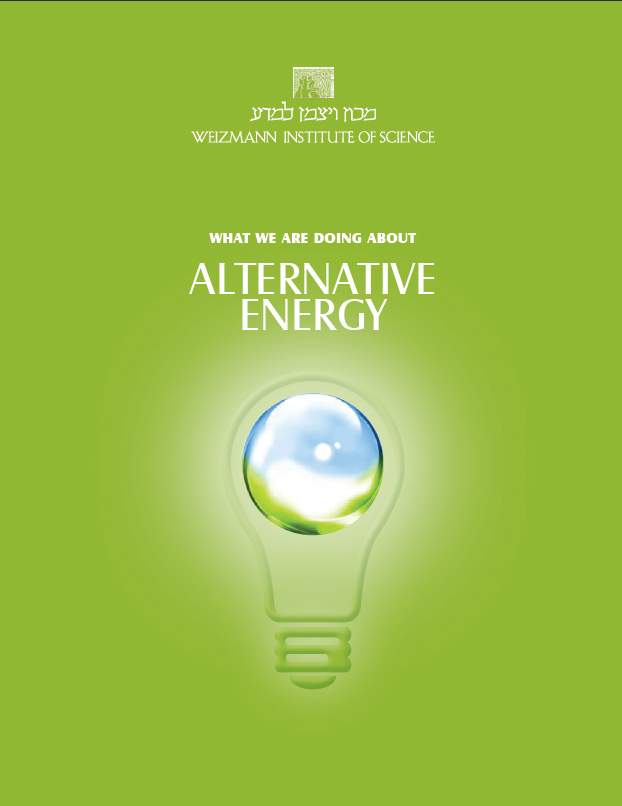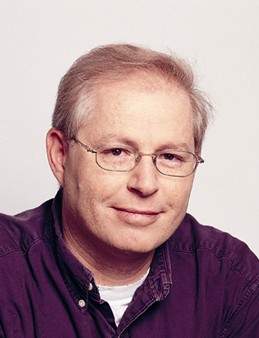
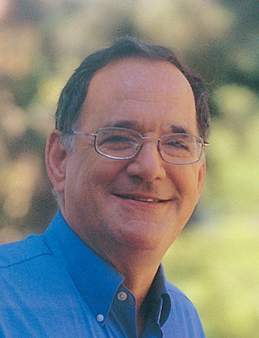
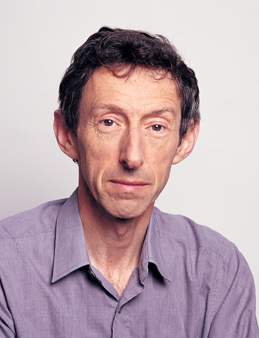
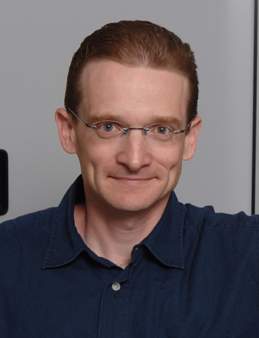
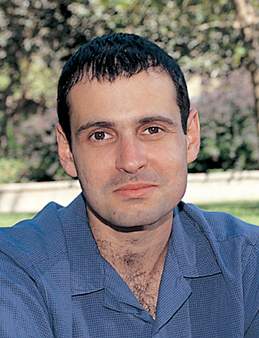
Solar cells work because sunlight that hits certain material structures imparts energy to the material’s electrons, making it possible to separate electrons from their positive atom cores. This separation is the critical step in converting solar energy to electrical energy. While charge separation devices – photovoltaic cells – are already in use today, their high cost and relatively low efficiency makes the electrical power they generate considerably more expensive than conventional electricity from large power plants.
Rather than trying to improve the efficiency of existing solar cells, Weizmann Institute scientists, with support from AERI, decided to take a new approach to charge separation. Their idea is to use their combined expertise in organic chemistry, materials research, nanoscience, nanotechnology, and environmental and theoretical chemistry to create new material structures. They are building nanostructures that link together two very different types of nanoparticle – metals and semiconductors – using organic molecules to connect the two. The researchers are also investigating the possibility of creating structures that are self-assembling.
The scientists – Prof. Yinon Rudich of the Environmental Sciences and Energy Research Department, Dr. Boris Rybtchinski of the Organic Chemistry Department, Prof. Ron Naaman of the Chemical Physics Department, and Prof. Gary Hodes and Dr. Leeor Kronik of the Materials and Interfaces Department – are at the ”building-block” stage, working out the basic designs that will yield the best charge separation. Several promising arrays have already been identified. The end results, they hope, will create a breakthrough in solar energy conversion that will go beyond improving conventional solar cells. Efficient solar nanostructures might be used, for instance, to split water for hydrogen production. They could also be incorporated into a variety of surfaces, or even be applied in the form of light-harvesting paint. In the future, ”solar” nanostructures on the exterior of buildings could also be adapted for various purposes – such as using sunlight to destroy pollutants in the air.
Prof. Gary Hodes’s research is supported by the Helen and Martin Kimmel Center for Nanoscale Science.
Rather than trying to improve the efficiency of existing solar cells, Weizmann Institute scientists, with support from AERI, decided to take a new approach to charge separation. Their idea is to use their combined expertise in organic chemistry, materials research, nanoscience, nanotechnology, and environmental and theoretical chemistry to create new material structures. They are building nanostructures that link together two very different types of nanoparticle – metals and semiconductors – using organic molecules to connect the two. The researchers are also investigating the possibility of creating structures that are self-assembling.
The scientists – Prof. Yinon Rudich of the Environmental Sciences and Energy Research Department, Dr. Boris Rybtchinski of the Organic Chemistry Department, Prof. Ron Naaman of the Chemical Physics Department, and Prof. Gary Hodes and Dr. Leeor Kronik of the Materials and Interfaces Department – are at the ”building-block” stage, working out the basic designs that will yield the best charge separation. Several promising arrays have already been identified. The end results, they hope, will create a breakthrough in solar energy conversion that will go beyond improving conventional solar cells. Efficient solar nanostructures might be used, for instance, to split water for hydrogen production. They could also be incorporated into a variety of surfaces, or even be applied in the form of light-harvesting paint. In the future, ”solar” nanostructures on the exterior of buildings could also be adapted for various purposes – such as using sunlight to destroy pollutants in the air.
Prof. Gary Hodes’s research is supported by the Helen and Martin Kimmel Center for Nanoscale Science.
Dr. Leeor Kronik’s research is supported by the Gerhardt Schmidt Minerva Center on Supramolecular Architectures; and the Carolito Stiftung, Switzerland. Dr. Kronik is the incumbent of the Delta Career Development Chair.
Prof. Ron Naaman’s research is supported by the Nancy and Stephen Grand Research Center for Sensors and Security; the Fritz Haber Center for Physical Chemistry; the Wolfson Advanced Research Center for Bio Micro Technology; the Philip M. Klutznick Fund for Research; the Carolito Stiftung, Switzerland; Intel, Israel; and Mr. Roberto Kaminitz, Sao Paulo, Brazil. Prof. Naaman is the incumbent of the Aryeh and Mintze Katzman Professorial Chair.
Prof. Yinon Rudich’s research is supported by the Helen and Martin Kimmel Center for Nanoscale Science; the Sussman Family Center for the Study of Environmental Sciences; the Carolito Stiftung, Switzerland; Mr. and Mrs. Yossie Hollander, Israel; and Intel, Israel.
Dr. Boris Rybtchinski’s research is supported by the Sir Charles Clore Research Prize; the Robert Rees Applied Research Fund; Mr. and Mrs. Yossie Hollander, Israel; and Mr. and Mrs. Larry Taylor, Los Angeles, CA. Dr. Rybtchinski is the incumbent of the Abraham and Jennie Fialkow Career Development Chair.


















